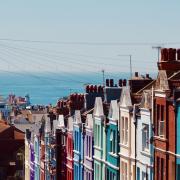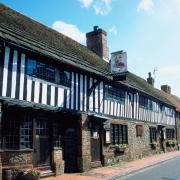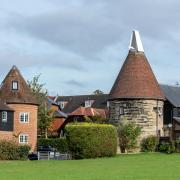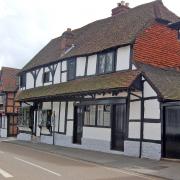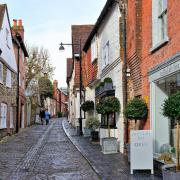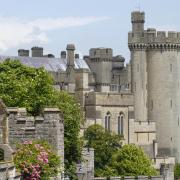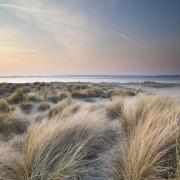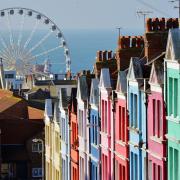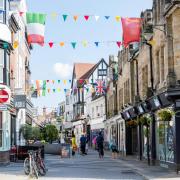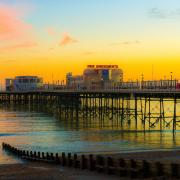Steeped in history and tradition, this East Sussex town is the perfect place to discover your inner rebel
Getting there
Situated on the Greenwich Meridian, Lewes resides on both banks of the river Ouse in a gap in the chalky hills of the South Downs, which loom over the town like a soft green blanket. Located just off the A27 between the beautiful coastal towns of Eastbourne and Brighton, Lewes is an easy drive from either, should you wish to enjoy the hustle and bustle. A place known widely for its spirit of dissent and furious debate, Lewes has fought off many appeals for development from housing estates to supermarket chains, choosing instead to favour local independent shops and freehouses. Parking shouldn’t be a problem should you choose to visit by car, with plenty of car parks available. Alternatively arrive by train and find yourself immediately in the centre of town. There are regular railway services to London Victoria, Brighton and Hastings.
History
Lewes is a town with a long history of dissidence. Named by the Saxons who first built a castle moat as a defensive point over the river, the town was given as a reward to the 1st Earl of Surrey by William the Conqueror after the Norman Invasion. It was the Earl who built Lewes Castle on the Saxon plot. The town was the site of the Battle of Lewes between the forces of Henry III and Simon de Montfort in the Second Barons’ War in 1264, and at the time of the Marian persecutions of 1555-1557, 17 Protestant martyrs were executed in front of the Star Inn. The Inn has since become the local Town Hall and the martyrs were memorialised in 1901 at Cliffe Hill. Their deaths have become a significant part of Lewes’ history. They are remembered by the Bonfire Societies as part of Lewes’ annual Bonfire Night celebrations on 5 November.
Another celebrated time in Lewes’ history is the six year period from 1768, in which Thomas Paine called this small town in East Sussex home. Paine is most famous as the author of The Rights of Man, which influenced the French Revolution, Common Sense which influenced the American Revolution and The Age of Reason which argued against organised religion and managed to outrage anyone he had missed previously. After his stay in Lewes he headed over the Atlantic to America, at the invitation of founding father Benjamin Franklin. While in Lewes he lodged over the Tobacco shop at Bull House on the main street, and married (if only briefly) his landlord’s daughter. The building is now the headquarters of the Sussex Archaeological Society.
Annual festivals and events
Every 5 November sees Lewes consumed with bonfires, fireworks and torch-bearing processions through the streets, in what is said to be the biggest Bonfire Night celebrations in the UK. With seven local Lewes Bonfire Societies each organising their own celebrations in a different part of the town, as well as around 25 or more visiting societies from all over Sussex, Lewes literally comes alight with local rivalry on 5 November. A large proportion of streets are closed for the processions and don’t open again until the early hours of the morning so public transport is your best option if you are thinking of visiting. It also gets very loud and crowded, so isn’t suitable for small children or buggies and make sure to wrap up warm!
If you are looking for something more family friendly then why not head down to the World Pea Throwing Championship, at the Lewes Arms pub every summer since 2003. Frozen peas are provided and there are various adult and children’s categories, in which competitors have to throw their pea as far as they can down the neighbouring Castle Ditch Lane. The winner is the one whose pea travels the furthest. With the current record well over 40m it’s best to get practising your overarm throw now.
Ameneties
When poetically describing the town of Lewes, William Morris wrote that it was “lying like a box of toys under a great amphitheatre of chalk hills.” And while this paints a beautiful picture of the town’s location, it does nothing to describe the vibrancy and variety that can be found on Lewes’ streets. Filled with local independent shops, freehouses, and historic landmarks, there is plenty to keep visitors of all ages occupied. Visitor attractions include Lewes Castle, Southover Grange and public gardens, and a 16th century timber-framed Wealden hall house known as Anne of Cleves’ House because it was given to her as part of her divorce settlement from Henry VIII – although she never lived there.
Popular music gigs take place at a number of venues and pubs across the town and the Elephant and Castle hosts the Saturday Folk Club. The Union Music Store based in Lewes has become a centre for modern folk, country and Americana, both promoting and hosting live gigs, and recording and producing local musicians. A monthly comedy club based at the Lewes Con Club was created in 2010 and an annual local music festival, Lewes Live (previously Rock in the Bog), takes place each summer.
A new independent three-screen cinema, the Lewes Depot, opened in May 2017 in a multimillion-pound redevelopment of a former Harvey’s brewery depot close to Lewes station. There are also two local film clubs who show films in the All Saints Centre, a former church in Friars Walk.
Located four miles outside of Lewes is the world famous Glyndebourne opera house. Founded in 1934, the venue draws large audiences for its summer festival and has attracted a host of international talent throughout its history. Closer to home the Lewes Operatic Society (founded in 1911) and New Sussex Opera meet regularly for rehearsals in Lewes.
Meet the neighbours
Controversial rock singer and songwriter Arthur Brown currently resides in Lewes after a career spanning 50 years. He is best known for his flamboyant theatrical performances and his powerful wide-ranging operatic voice, which has been a significant influence on a wide variety of musicians, within rock and heavy metal. Brown has been the leader singer in several groups but is best know for his 1968 single Fire with The Crazy World of Arthur Brown which reached number one in the UK singles chart as well as in Canada, and number two on the US Billboard Hot 100.
Council
At the lowest level, the area is governed by Lewes Town Council which is based in the Town Hall on Lewes High Street, with 18 councillors representing the three wards of Castle, Priory and Bridge.
Lewes is also the name the local district council which has seven councillors representing the same three wards and is administered from offices in Southover House on Southover Road.
The town is the location of the East Sussex County Council main offices, in County Hall on St Anne’s Crescent where the wards of Lewes (Lewes Castle and Lewes Priory) and Ringmer and Lewes Bridge are represented by two councillors.
Lewes has been represented in the House of Commons of the UK Parliament since 2015 by Conservative MP, Maria Caulfield, who retained her seat in 2017 with a majority of 10.2 per cent.
More…
• Here’s what it’s like to live in Haywards Heath - Ideally situated for commuting to London and Brighton, this West Sussex town offers the perfect blend of rural and urban living




